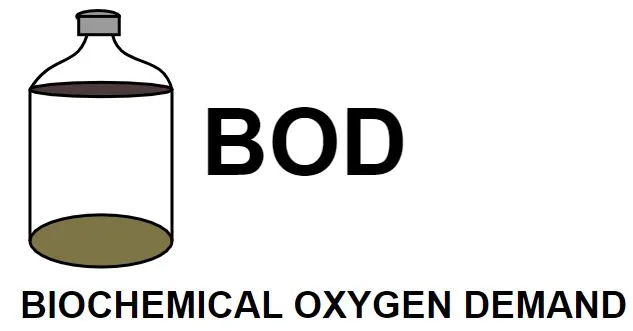The full form of BOD is Biochemical Oxygen Demand. This term is used to describe the amount of oxygen that is required to break down organic matter in water. This measurement is crucial for assessing water quality and the potential environmental impact of organic pollutants in aquatic ecosystems. What is BOD Full Form This term is used to describe the amount of oxygen that is required to break down organic matter in water.



Importance of BOD
- Detecting Organic Pollution: It signals the presence of organic pollutants in water.
- Water Quality Assessment: Helps evaluate the health of aquatic ecosystems.
- Mitigating Environmental Impact: Identifies and addresses oxygen depletion harming aquatic life.
- Wastewater Treatment: Guides the design and operation of treatment plants.
- Regulatory Compliance: Sets limits for effluent discharges, preventing contamination.
- Pollution Monitoring: Identifies pollution sources for effective control.
- Public Health Protection: Ensures safety of drinking water and recreational waters.
- Research and Conservation: Aids studies on environmental impact and ecosystem health.
BOD Testing Methods
- Biochemical Oxygen Demand (BOD) testing is essential for evaluating water quality and assessing the extent of organic pollution in water bodies. There are two primary approaches to BOD testing: standard methods and continuous monitoring.
- Standard BOD testing methods include the 5-Day BOD and modified 5-Day BOD tests, which involve collecting a water sample, incubating it with dilution water for a specified period, and measuring changes in dissolved oxygen levels to calculate BOD.
- Additionally, the Ultimate BOD method extends the incubation period to assess long-term oxygen demand. On the other hand, continuous monitoring methods, such as respirometry, fluorescence-based sensors, biosensors, and online BOD analyzers, provide real-time BOD data by measuring oxygen consumption.
- Microorganisms or utilizing biological agents. The choice of method depends on factors like accuracy requirements, available resources, and the specific objectives of the analysis. Often, a combination of methods may be employed to gain a comprehensive understanding of water quality and BOD levels in various contexts.
BOD and Wastewater Treatment
Biochemical Oxygen Demand (BOD) plays a crucial role in wastewater treatment processes. BOD is a measure of the amount of oxygen required by microorganisms to biologically degrade organic matter in wastewater. Its significance in wastewater treatment can be understood through the following points:
- Indicator of Wastewater Pollution: BOD is used to assess the level of organic pollution in wastewater. High BOD levels indicate the presence of organic substances, such as sewage, industrial effluents, and organic chemicals, which can deplete oxygen in receiving water bodies if not treated properly.
- Design and Operation of Treatment Plants: BOD testing is fundamental in the design and operation of wastewater treatment plants (WWTPs). It helps determine the treatment capacity required to effectively remove organic pollutants from the influent wastewater. Different treatment processes, such as activated sludge, aerobic digestion, or biological filters, are designed based on BOD levels.
- Effluent Quality Standards: Regulatory authorities often establish BOD limits for effluent discharge permits. WWTPs must meet these limits to prevent environmental contamination and protect the health of receiving water bodies. Regular BOD monitoring ensures compliance with these standards.
- Process Control: BOD measurements are used for process control within WWTPs. Operators can adjust treatment processes based on real-time or periodic BOD data to optimize treatment efficiency and ensure the removal of organic contaminants.
- Monitoring of Biological Processes: WWTPs employ biological treatment processes that rely on the activity of microorganisms to degrade organic matter. BOD testing helps monitor the health and performance of these microbial communities. Changes in BOD levels can signal issues or upsets in the biological treatment process.
- Effluent Quality Improvement: Reducing BOD levels through treatment processes is essential to ensure that treated wastewater meets environmental standards before discharge. Lower BOD in effluent water means less oxygen demand when the treated water is released into natural water bodies, reducing the risk of harming aquatic ecosystems.
- Protection of Aquatic Life: High BOD levels in receiving water bodies can lead to oxygen depletion, endangering aquatic life. Effective wastewater treatment reduces the risk of oxygen depletion and its associated ecological impacts.
Effects Of High BOD Levels
- Deplete Oxygen: Leading to hypoxic conditions.
- Cause Fish Kills: Due to insufficient oxygen for aquatic organisms.
- Trigger Algae Blooms: Often with toxic species.
- Alter Ecosystems: Changing species composition.
- Reduce Water Quality: Resulting in odor and turbidity.
- Degrade Habitats: Impacting wetlands, rivers, and lakes.
- Threaten Human Health: Contaminated water can pose health risks.
- Incur Economic Costs: Including losses in fisheries and remediation expenses.
- Raise Regulatory Concerns: Violating water quality standards may lead to penalties.
BOD Full Form: Factors Affecting BOD Levels
- Presence of Organic Matter
– Higher quantities of biodegradable natural waste (like sewage, meals waste, or plant debris) boom BOD, as extra oxygen is wanted to interrupt it down. - Microbial Activity
– The extra lively the microbial population, the better the BOD, due to the fact that microbes eat extra oxygen to decompose natural substances. - Temperature
– Warmer temperatures boost up microbial metabolism, main to better BOD. Cooler temperatures gradual down this interest and decrease BOD levels. - Dissolved Oxygen (DO) Levels
– Low preliminary DO can restrict microbial respiration, affecting the fee at which natural fabric is decomposed and influencing measured BOD. - pH Level
– Extreme pH levels (too acidic or too alkaline) can inhibit microbial interest, lowering BOD. Optimal pH for BOD decomposition is generally among 6.five and 7.five. - Toxic Substances
– The presence of heavy metals, pesticides, or commercial chemical compounds can kill or inhibit microbes, thereby decreasing BOD regardless of the presence of natural fabric. - Availability of Nutrients
– Nutrients like nitrogen and phosphorus aid microbial growth. A deficiency can restrict microbial interest and decrease BOD.
BOD Full Form: BOD vs. COD (Chemical Oxygen Demand)
Definition
– BOD measures the quantity of oxygen required through microorganisms to biologically decompose natural be counted in water.
– COD measures the whole quantity of oxygen required to chemically oxidize each biodegradable and non-biodegradable substances.
Type of Decomposition
– BOD includes organic decomposition the usage of bacteria.
– COD includes chemical oxidation the usage of sturdy oxidizing agents (like potassium dichromate).
Time Required for Testing
– BOD trying out takes five days (BOD₅) below wellknown conditions.
– COD trying out is a good deal faster, usually finished inside 2–three hours.
Accuracy and Scope
– BOD displays best biodegradable natural be counted.
– COD measures each biodegradable and non-biodegradable substances, making it greater comprehensive.
Application in Wastewater Analysis
– BOD is favored for organic remedy layout and environmental tracking.
– COD is used for fast tracking and in business wastewater remedy.
Microbial Involvement
– BOD relies upon at the presence and pastime of microorganisms.
– COD does now no longer require microorganisms, best chemical reactions.
Sensitivity to Toxic Substances
– BOD can be misguided in poisonous water samples, as pollutants can inhibit microbial pastime.
– COD is unaffected through toxicity, giving regular results.
Typical Values in Clean vs. Polluted Water
– In smooth water, BOD and COD values are each low.
– In polluted water, COD is normally better than BOD because of the presence of non-biodegradable substances.
BOD Full Form: Environmental Impact
Oxygen Depletion in Water Bodies
– High BOD ranges suggest greater oxygen is being ate up via way of means of microbes, which reduces dissolved oxygen to be had for aquatic life.
Threat to Aquatic Life
– Low dissolved oxygen resulting from excessive BOD can result in the loss of life of fish, amphibians, and different aquatic organisms.
Eutrophication Acceleration
– BOD contributes to eutrophication whilst natural waste and vitamins growth microbial growth, main to algal blooms and oxygen scarcity.
Disruption of Ecosystems
– Continuous excessive BOD can completely regulate aquatic ecosystems, decreasing biodiversity and favoring tolerant or invasive species.
Foul Odors and Unpleasant Conditions
– Decomposition of natural be counted with excessive BOD produces foul-smelling gases like hydrogen sulfide, making water our bodies ugly and unusable.
Impact on Human Activities
– High BOD ranges in rivers and lakes can have an effect on recreation, fishing, tourism, and water sports activities via way of means of degrading water quality.
Contamination of Drinking Water Sources
– Water reassets with excessive BOD can be mistaken for remedy and human consumption, growing the danger of waterborne diseases.
Conclusion
In conclusion, Biochemical Oxygen Demand (BOD) is a crucial parameter in environmental science and water quality assessment. It serves as a valuable indicator of organic pollution in water bodies, guiding the design and operation of wastewater treatment plants, ensuring compliance with regulatory standards, and protecting aquatic ecosystems.
The measurement and monitoring of BOD are essential for safeguarding water quality, preventing oxygen depletion, and minimizing the adverse ecological and economic impacts of high BOD levels. As such, BOD testing plays a pivotal role in responsible wastewater management and the preservation of clean and healthy water resources for both the environment and human use.
Frequently Asked Question
BOD is a measure of the amount of oxygen required by microorganisms to biologically degrade organic matter in water.
BOD is important because it helps evaluate the health of water bodies, assess the impact of organic pollutants, and guide wastewater treatment processes. It’s a key parameter for protecting aquatic ecosystems and public health.
BOD is typically measured through laboratory tests that involve collecting a water sample, incubating it, and measuring changes in dissolved oxygen levels over a specific period, usually 5 days (5-day BOD).






